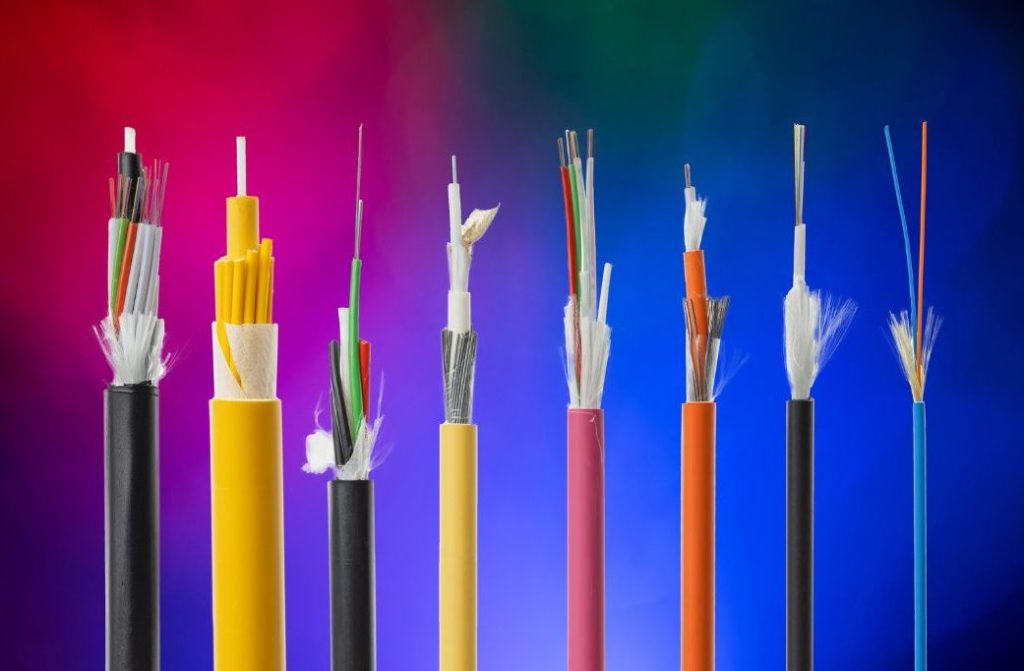Engineering newcomers may find the world of fibre optic cables overwhelming, especially when choosing between multimode and singlemode options.
These two distinct types of cables, also known as fibre optic cables, serve different purposes and applications but play a crucial role in connecting various components within a network.
We’ll look to break down below, what is multimode and singlemode fibre, the differences, and shed light on their specific characteristics and use cases.
You should then have a clearer understanding of each cable type, helping you to make an informed choice that aligns precisely with any task at hand that comes your way.
What Is a Multimode Fibre Optic Cable?

Let’s begin first with understanding what is a multimode fibre optic cable.
It is a type of optical cable designed with a larger core diameter, typically 50 or 62.5 microns, similar to the OM4 Fibre Patchcord for example, allowing multiple light modes to travel through the cable simultaneously.
This design facilitates the propagation of light signals over relatively short distances with less precision than singlemode cables.
Multimode cables find common applications in scenarios where high data rates are not essential, and short-distance data transmission suffices.
They are commonly used for local area networks (LANs), data centres, and short-distance data transmission within buildings.
Due to their larger core diameter, multimode cables can accommodate more light and modal dispersion, making them more tolerant to imperfections in cable connections and bends.
For beginners in engineering seeking to make an informed decision between multimode and singlemode fibre optic cables, understanding the core characteristics and applications of multimode cables is crucial in determining which type best suits their specific needs.
What Is a Singlemode Fibre Optic Cable?

A singlemode fibre optic cable is an optical fibre known to transmit data over long distances with exceptional clarity and low signal loss.
Its core attribute lies in its significantly smaller core diameter, typically around 9 microns, which allows only one light mode to propagate through the cable.
Unlike multimode cables, which can support multiple light modes, singlemode cables such as OS2 Fibre Patch Cords maintain a single, focused pathway for the light signal.
Due to its singular mode propagation, singlemode cables are ideally suited for applications requiring high bandwidth and extended distances.
They are often used in telecommunications, interconnecting networks, and long-distance data transmission over vast distances. Singlemode cables offer unparalleled performance in scenarios where data integrity and minimal signal dispersion are critical.
In short, for applications demanding long-distance, high-performance data transmission, singlemode fibre optic cables are preferred over multimode cables due to their smaller core diameter and singular mode propagation capabilities.
Main Differences Between Multimode and Singlemode Cables
When it comes to fibre optic cables, choosing between multimode and singlemode cables can significantly impact the performance and efficiency of your network.
Each type possesses distinct characteristics, making them suitable for specific applications.
The main differences between singlemode versus multimode fibre optic cables are important to know to make an informed decision based on your requirements.
Core Diameter

The core diameter is one of the fundamental differences between multimode and singlemode cables. Multimode cables, as we know, have a larger core diameter, typically ranging from 50 to 62.5 micrometres, which allows them to accommodate multiple light modes.
As a result, light can take multiple paths within the core, leading to modal dispersion. Modal dispersion causes light signals to spread out and overlap, affecting the clarity and integrity of transmitted data.
On the other hand, singlemode cables feature a much narrower core diameter, typically around 9 micrometres. The smaller core diameter of singlemode cables permits only one mode of light to propagate, reducing modal dispersion and enhancing signal transmission.
Sheath Colour

Another apparent difference between multimode and singlemode cables lies in their sheath color. Multimode cables often come with an orange sheath, while singlemode cables are commonly identified by their yellow sheath according to TIA-598C standard definition.
This colouring helps easily to identify during installation and maintenance, helping technicians avoid potential mistakes or confusion in complex network setups.
Bandwidth

Bandwidth capacity is a critical factor in data transmission rates. Multimode cables offer lower bandwidth compared to singlemode cables.
Due to modal dispersion, the various light paths in multimode cables limit the amount of data that can be transmitted simultaneously. This limitation results in lower bandwidth and imposes a cap on data transfer rates.
In contrast, singlemode cables boast higher bandwidth capacity, making them ideal for high-speed data transfer and long-distance applications. The reduced modal dispersion allows for faster and more reliable transmission of data, especially in scenarios where high data rates are essential.
Distance

One of the most significant differentiators between multimode and singlemode cables is their transmission distance capabilities. Singlemode cables can carry signals over much longer distances than multimode cables. This property is particularly advantageous for expansive networks and long-haul data transmission requirements.
Multimode cables are suitable for short-distance applications, such as within a building or campus, due to the inherent modal dispersion that limits their performance over longer distances.
Cost

Cost considerations often play a vital role in choosing the appropriate fibre optic cable type for a project. Multimode cables are generally more cost-effective than singlemode cables, primarily because of their larger core diameter and lower manufacturing complexity.
For short-distance installations, multimode cables present a budget-friendly option without compromising performance.
On the other hand, singlemode cables may have higher initial costs due to their narrower core and precision manufacturing. However, for long-distance installations and networks that demand higher data transmission rates, the long-term cost-effectiveness of singlemode cables becomes evident.
Speed

The combination of core diameter and bandwidth directly affects data transmission speed for both cable types. Singlemode cables, with their narrower core and higher bandwidth, enable higher data transmission speeds.
The reduced modal dispersion in singlemode cables allows for data to be transmitted with minimal signal distortion and maximum efficiency, making them the preferred choice for high-speed data transfer applications.
Installation

The installation techniques for multimode and singlemode cables differ due to their core diameter variances. Singlemode cables require more precise and careful installation because of their smaller core diameter. Any misalignment during installation can result in signal losses and reduced performance. As a result, skilled technicians and proper alignment tools are necessary to ensure optimal performance in singlemode installations.
On the other hand, multimode cables are more forgiving during installation, making them easier to work with, especially for shorter-distance setups. However, proper installation practices are still essential to maintain reliable data transmission.
Ultimately, understanding the differences between multimode and singlemode fibre optic cables is crucial for selecting the right cable type to meet your networking requirements. If you require high-speed data transfer over long distances, singlemode cables are the better choice.
Conversely, for cost-effective short-distance applications, multimode cables offer a suitable solution. By carefully evaluating the core diameter, bandwidth, transmission distance, cost, speed, and installation considerations, beginner engineers can make an informed decision that ensures optimal performance and efficiency in their fibre optic network.
If you want to find out more or discover what the right fibre optic solution is that you need for your installation, do not hesitate to contact us at Altimex today to get your project connected in confidence.


